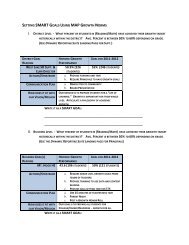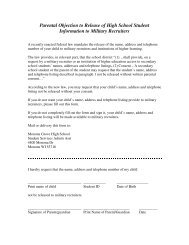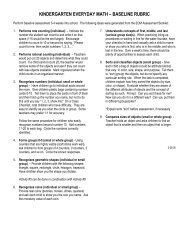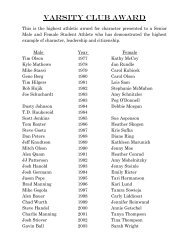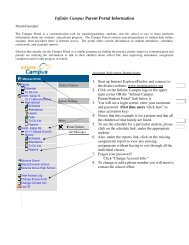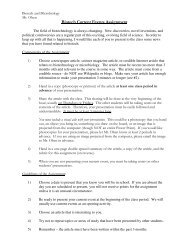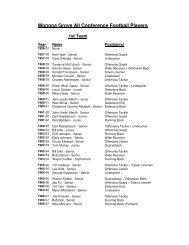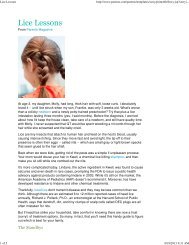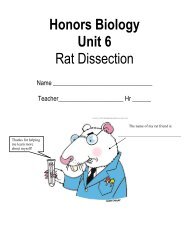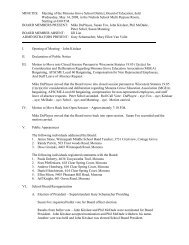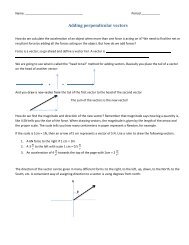Packet for Cu lab, naming and writing formulas, reaction types and ...
Packet for Cu lab, naming and writing formulas, reaction types and ...
Packet for Cu lab, naming and writing formulas, reaction types and ...
Create successful ePaper yourself
Turn your PDF publications into a flip-book with our unique Google optimized e-Paper software.
Chemical Change Lab - Five Fabulous Reactions!<br />
Today you will observe different <strong>types</strong> of chemical <strong>reaction</strong>s to review the evidence <strong>for</strong> chemical change <strong>and</strong> solidify some<br />
ideas seen on the Copper <strong>lab</strong>. The goals of the <strong>lab</strong> are:<br />
• Describe evidence of chemical change <strong>for</strong> each <strong>reaction</strong><br />
• Define exothermic <strong>and</strong> endothermic <strong>reaction</strong>s, as well as precipitate<br />
• Observe different <strong>types</strong> of chemical <strong>reaction</strong>s<br />
• Each <strong>lab</strong> bench has different <strong>reaction</strong>s.<br />
You <strong>and</strong> your group will move from station to station <strong>and</strong> will follow the directions written on each table. You will be asked to<br />
A. describe the evidence <strong>for</strong> chemical change that you observe, <strong>and</strong><br />
B. write the number of reactants involved in the <strong>reaction</strong> <strong>and</strong> their type (two elements, one element <strong>and</strong> a compound...)<br />
Do not <strong>for</strong>get to:<br />
1. Wear safety goggles (on your eyes) the entire time! You are working with dangerous chemicals!<br />
2. No horseplay whatsoever will be tolerated! This is your only warning.<br />
3. Tie long hair back—we will be using fire <strong>and</strong> don’t want your hair to become part of the <strong>reaction</strong>s.<br />
4. Wash all glassware be<strong>for</strong>e <strong>and</strong> after using it. Then return it to its proper place.<br />
5. Put no solids into the sink. Unless your teacher tells you otherwise, only rinse liquids down the sink. Paper<br />
towels go into the trash (not into the recycling bin) when you are finished. Use the fewest paper towels that you can.<br />
Station 1A<br />
Reaction: Mg + O2<br />
MgO<br />
1. Describe the evidence <strong>for</strong> chemical change you observed:<br />
_____________________________________________________________________________________________<br />
_____________________________________________________________________________________________<br />
2. How many reactants are present <strong>and</strong> what type of reactants _____________________________________________<br />
3. How many products are present <strong>and</strong> what type of products ______________________________________________<br />
4. Is the <strong>reaction</strong> exothermic or endothermic? Explain your answer: _________________________________________<br />
5. Indicate if a precipitate <strong>for</strong>med: ___________________________________________________________________



